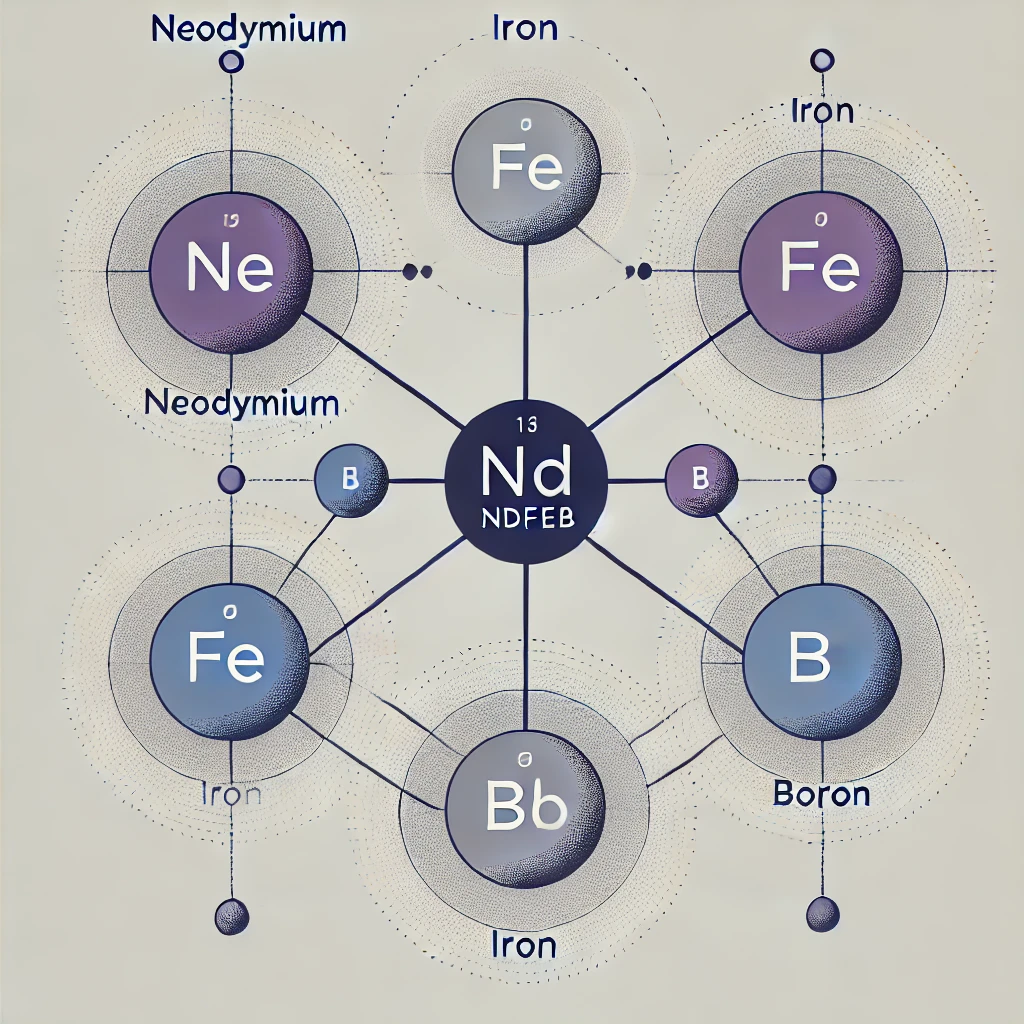Neodymium magnets are powerful permanent magnets that have found their way into numerous modern applications, from electronics to industrial applications. In this blog, we dive deeper into how these magnets work, the chemical name, the manufacturing process and the durability of this special material.
What are Neodymium Magnets?
Neodymium magnets belong to the group of rare earth metals and are a type of permanent magnet. They are known for their exceptional strength, which makes them ideal for applications where strong magnetic forces are required in a small size.

The chemical composition of a neodymium magnet is usually referred to as NdFeB, which stands for neodymium (Nd), iron (Fe) and boron (B). These elements combine to form an alloy that is then magnetized to create the powerful magnet.
How Do Neodymium Magnets Work?
Magnetism is caused by the movement of electrons in atoms. In materials such as iron and neodymium, the spins of electrons align in such a way that they generate a strong magnetic field. What makes neodymium magnets special is their high degree of magnetization, which is caused by the unique properties of the neodymium atoms and their interactions with the other elements in the alloy.

When a neodymium magnet is exposed to an external magnetic field, the magnetic domains (small magnetically aligned regions) within the magnet will rotate in the same direction as the field. Once the external field is removed, these domains remain aligned, allowing the magnet to retain its permanent magnetic properties.
Origin and Production of Neodymium Magnets
Neodymium is mainly extracted from minerals such as bastnäsite and monazite, which can be found in abundance in China, which is the world’s largest producer of rare earths. After extraction, the neodymium is extracted and purified through a series of chemical processes.
The production of neodymium magnets begins by mixing neodymium with iron and boron. This mixture is then melted and cooled to a solid alloy. After cooling, the alloy is finely ground into a fine powder. This powder is pressed in a die under the influence of a magnetic field, which causes the magnetic domains to align in the desired direction. The pressed material is then sintered (heated without melting) to form a solid and strong magnet. As a final step, the magnet is magnetized by exposure to a very strong magnetic field.
Reality about Sustainability
Although neodymium magnets are very powerful and versatile, their sustainability comes with challenges. Mining rare earth metals, such as neodymium, has significant environmental impacts, including habitat disturbances and pollution from chemical processes. In addition, these magnets are susceptible to corrosion if not properly treated or coated, especially in humid environments.
Recycling neodymium magnets is an important area of research, as recovering neodymium from discarded products can help reduce the need for new mining. Although this process is currently complex and costly, innovations are constantly being developed to make it more efficient and environmentally friendly.
Conclusion
Neodymium magnets are a remarkable technological achievement, with applications that significantly improve our daily lives. From their strong magnetic power to their complex manufacturing processes and sustainability challenges, neodymium magnets represent both the possibilities and responsibilities of modern technology. By being aware of the impact and steps we can take to improve sustainability, we can enjoy the benefits of these powerful magnets with a more responsible approach.

